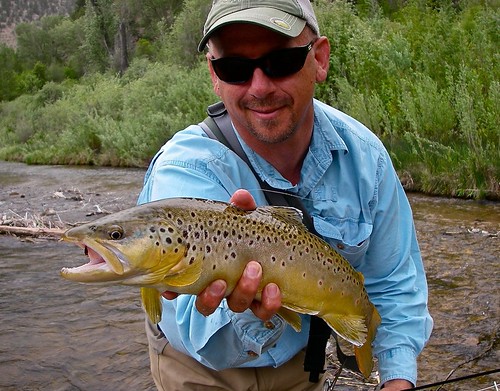|
Posted: 11 Nov 2011 08:45 AM PST
I was was nine years old when my brother Scott gave me some advice I've applied to all sorts of things since then. On that Saturday, we were playing catch after watching our beloved Red Sox on NBC’s Game of the Week when I made an imaginary relay throw pretending to be the Red Sox' shortstop, Rick Burleson. Scott, who was already a high school star, caught my near-perfect throw and proceeded to chew my butt for throwing side-armed. "But Burleson throws side armed," I objected. At this, Scott walked right up to me, pointed the finger of his ungloved hand at my nose and said, "He's not a pro because he can do it; he can do it because he's a pro." After giving me a few seconds to process this profundity, he spoke again—in a slightly less intense tone—and explained how throwing overhanded reduces the number of variables in calculating a release point: Overhand throws can miss high or low, but done properly the ball doesn't end up right or left. The importance of mastering the basics, as taught by my brother that day, has application in a lot of arenas, not the least of which is fly fishing. I’ve listed below six things that my fellow professionals in our fair sport, namely guides and instructors, do regularly that others might best avoid. 1. They twist their wrists while making a backcast. This is sometimes called “poor tracking." The effect is such that someone standing in front of the caster sees the side of the reel rather than the line housed in it. It’s something akin to throwing a baseball sidearmed. The problem here is that this little outward twist, magnified over 9 feet or so, does funky things to your rod tip, making it travel in several directions. And, as the truism says, wherever your rod tip goes, the line will follow. 2. They fish without a net. The fact is that a lot of guides fish on their own without a landing net, especially when walk/wading. There is actually a case to be made that landing a fish without a net can be less dangerous to the fish, but only in the case of very experienced hands. But this argument isn’t why guides do it. Usually it’s because they can, and it’s less trouble than carrying a net. For most folks, using a net greatly reduces the potential of injuring fish. It also increases the odds of getting a nice photo. 3. They grab their leaders while landing fish. Want to see a guide panic? Reach for your leader as he or she prepares to net your fish. Grabbing a leader removes virtually all of your tackle's shock-absorbing capacity, making a broken tippet very likely. Interestingly though, the pros will very often grab their own leaders, particularly if they aren't using a net (see #2). It can be done, but you have to properly manage a whole bunch of variables. For most people, it makes much more sense to just bring a fish to net by touching only your rod handle and the reel. 4. They carry their lines off the reel in loops while moving along a river. The frustration of trying to get your line free from brush, rocks, boots, and legs is one of the universal experiences of fly fishing. It is not, however, one of the more pleasurable ones. Given that rivers are furnished with all manner of line-grabbing objects (not to mention feet and legs that come with the angler), it’s usually a better use of time to reel in before moving very far. 5. They cast heavy nymph rigs overhead, even when using a series of split shot, weighted flies, and strike indicators. Timing the backcast is tough for lots of fly fishers. An early forward stroke creates snarls for which guides have a name, “do overs.” Nymph rigs, with their arsenal of two or three flies, multiple split shot, and a strike indicator, complicate things all the more. To avoid spending your day on a monofilament Rubik’s Cube, stick with simple flip casts made by letting the current pull the line downstream and then lifting the line in a high arc upstream in one simple motion. 6. They wade and fish at the same time. Wading is inherently dangerous, and doing it well is more of an acquired skill than it appears. Trying to manage line while wading is an unnecessary risk. Do one, then the other. Live to fish another day. There are easily more than six things the pros do that don’t bear imitation. In most cases, the pros will be the first to tell you what those are; in the end, that’s what their profession is all about. In this case, it’s almost always better to do as I say, not as I do.
|
Friday, November 11, 2011
6 Things Guides Do That You Shouldn't
Subscribe to:
Post Comments (Atom)

No comments:
Post a Comment